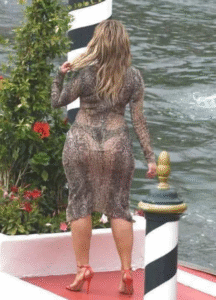She appeared dressed not in fabric, but in metaphor.
It wasn’t the silk of her gown that caught the eye—it was the silence it carried, the hush of memory stitched into every fold. She stepped into the room like a question mark at the end of a forgotten sentence, her presence both punctuation and pause. The color of her dress—was it blue? Or was it the shade of longing, the hue of oceans that never meet the shore?
She appeared dressed in the weight of her own story.
The bodice clung to her like a secret, cinched not by thread but by restraint. It held the shape of someone who had learned to carry grief gracefully, like pearls worn not for beauty but for ballast. Her sleeves whispered of winters endured, of hands held too briefly and promises made in candlelight. The hem brushed the floor like a sigh, sweeping up fragments of old conversations and the dust of dreams deferred.
She appeared dressed in defiance.
There was something in the way she stood—chin lifted, shoulders squared—that made the room recalibrate. She was not asking to be seen; she was daring you to look. The dress, though elegant, was not an invitation. It was armor. Satin as shield. Lace as legacy. She wore it not to charm, but to challenge. To remind the world that softness is not weakness, and beauty is not submission.
She appeared dressed in time.
The fabric bore the patina of decades, though it was newly sewn. It shimmered with the echoes of her mother’s laughter, the rustle of her grandmother’s prayers, the hush of generations who had walked into rooms like this one and made space for themselves. The dress was not vintage—it was ancestral. A tapestry of survival. A map of moments stitched into form.
She appeared dressed in contradiction.
The neckline dipped low, daring vulnerability, while the back rose high, guarding history. Her shoes—barely visible beneath the folds—were scuffed, not from neglect but from journey. She had walked far to arrive here, and the dress bore witness. It was both celebration and elegy. Both arrival and departure.
She appeared dressed in dusk.
Not the darkness of night, but the in-between. That golden hour where shadows stretch long and light softens. Her dress caught the light like memory—fleeting, warm, and impossible to hold. It glowed not with brilliance, but with truth. The kind of glow that comes from having nothing left to prove.
She appeared dressed in questions.
Who had she been before this moment? Who would she become after? The dress didn’t answer—it asked. It invited speculation, not certainty. It was a riddle wrapped in velvet, a mystery hemmed in silence. And yet, it was honest. It didn’t pretend to be simple. It didn’t pretend to be safe.
She appeared dressed in story.
Every stitch was a sentence. Every pleat, a paragraph. The train of the dress trailed behind her like a chapter unfinished, waiting to be written. She didn’t walk so much as narrate. Her movement was prose. Her stillness, poetry. The dress was not an accessory—it was a co-author.
She appeared dressed in presence.
Not the kind that demands attention, but the kind that alters atmosphere. The room changed when she entered. Conversations paused. Glasses stilled. The air thickened with reverence. She didn’t speak, but she was heard. She didn’t gesture, but she was felt. The dress amplified her essence, not her volume.
She appeared dressed in grace.
Not the kind taught in finishing schools, but the kind earned through fire. Her grace was forged, not gifted. It came from knowing pain and choosing kindness anyway. The dress moved with her like forgiveness—fluid, quiet, and powerful. It didn’t cling. It accompanied.
She appeared dressed in memory.
For some, she reminded them of someone they once loved. For others, someone they lost. The dress was a mirror, reflecting not her image but theirs. It held nostalgia like perfume—subtle, lingering, and impossible to name. She became a vessel for recollection, a silhouette of sentiment.
She appeared dressed in tomorrow.
Though rooted in history, the dress pointed forward. Its lines were classic, but its spirit was revolutionary. It didn’t follow trends—it set them. It didn’t echo the past—it reimagined it. She wore it like a promise, like a prophecy. Like a whisper that said, “Watch what comes next.”
She appeared dressed in herself.
Not in expectation. Not in performance. But in truth. The dress didn’t define her—it revealed her. It didn’t mask—it magnified. She wore it not to become someone else, but to become more fully herself. And in doing so, she gave others permission to do the same.
She appeared dressed…
And the world, for a moment, forgot its noise. Forgot its cynicism. Forgot its rush. It paused. It breathed. It remembered that beauty can be brave, that silence can be strong, and that a woman in a dress can be a revolution.


